Bed Bug Imposters
Bed Bug Imposters
There are a number of bugs that are sometimes mistaken for bed bugs. Whether its because they simply resemble the notorious pests, or they act like them – roaming around beds and/or biting people – the following have all understandably been called “bed bug imposters.” 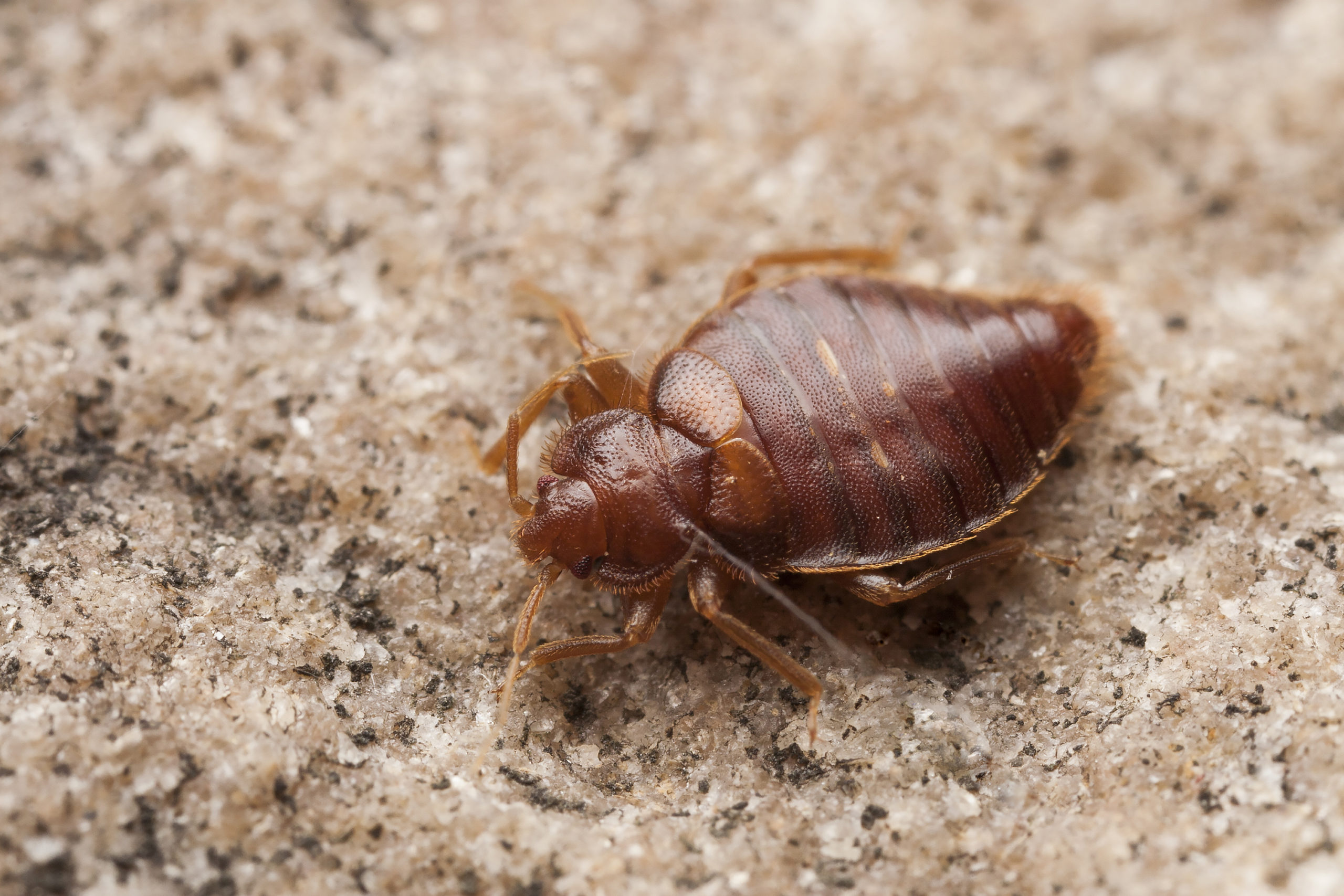
Bat Bugs
Bed bugs and bat bugs are members of the Cimicidae family and feast on the blood of mammals. The primary difference between these two bloodsucking bugs is the kinds of mammals that they feed on. Bat bugs, true to their names, primarily feed on bats, while bed bugs primarily feast on us. This also translates to where these two creatures can be found. While both bed bugs and bat bugs prefer to stay hidden, bat bugs are very unlikely to ever be in a bedroom. They occupy different cracks and crevices in areas where bats are present. This can sometimes mean caves, but in the case of houses this often includes cracks along chimneys, voids in walls or siding, inside abandoned/run down homes, and occasionally inside attics. In terms of appearance, the differences between these two creatures are so minute that a microscope or magnifying glass are typically needed to determine one from the other. Both are reddish-brown in color, have six legs, are shaped like an apple seed, have two antennas, are flat, and have eyes poking out on either side of their heads. The maximum size for bat bugs comes in at roughly 5mm long, making them generally smaller than bed bugs who average about 7mm long. Bat bugs also tend to be darker and richer in color, although this is not always the case, so it is not a foolproof way of identifying one from the other physically. The easiest way to tell the difference between the two is the excessive hair of the bat bugs. The hairs along the edge of their flat-ish bodies are roughly 4 times larger than those of bed bugs, extending beyond the widths of their eyes, while the hair on bed bugs is far smaller than the width of their eyes. 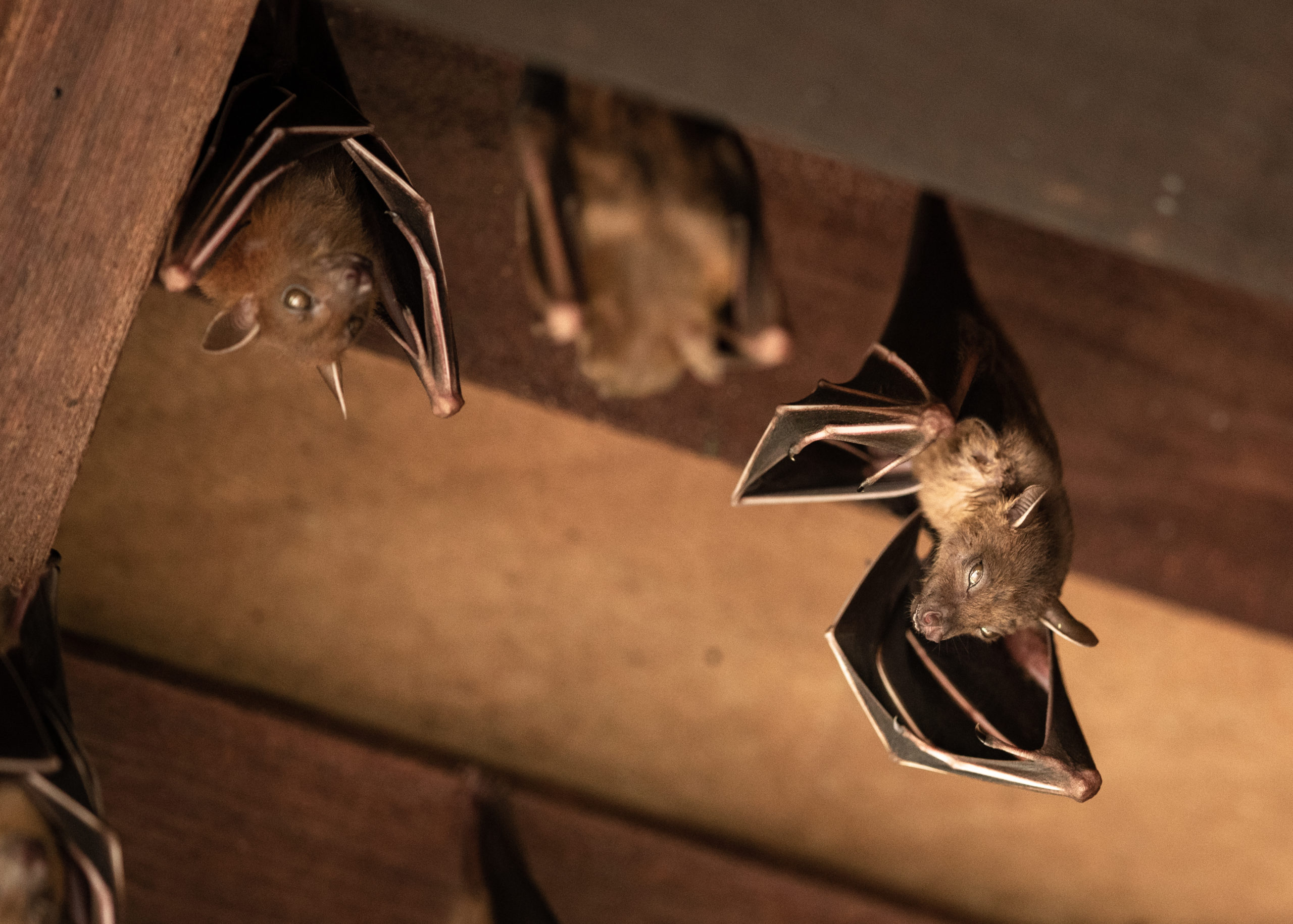
Swallow Bugs
Like bat bugs, swallow bugs are also closely related to bed bugs and their primary difference lies in the kind of animal these parasites target: cliff swallows. Cliff swallows are migratory birds and, due to the fact that swallow bugs can only reproduce while having access to their hosts, these bugs will only be found in areas where cliff swallows inhabit. This does include nests on homes and buildings which can lead to them being seen by homeowners and occupants. With regards to their appearance, swallow bugs closely resemble bed bugs save for some additional hairiness just like bat bugs. However, one key feature separates these creatures from bat bugs and relates them more closely to bed bugs – they will bite humans if given the chance (though luckily this is not a typical occurrence). 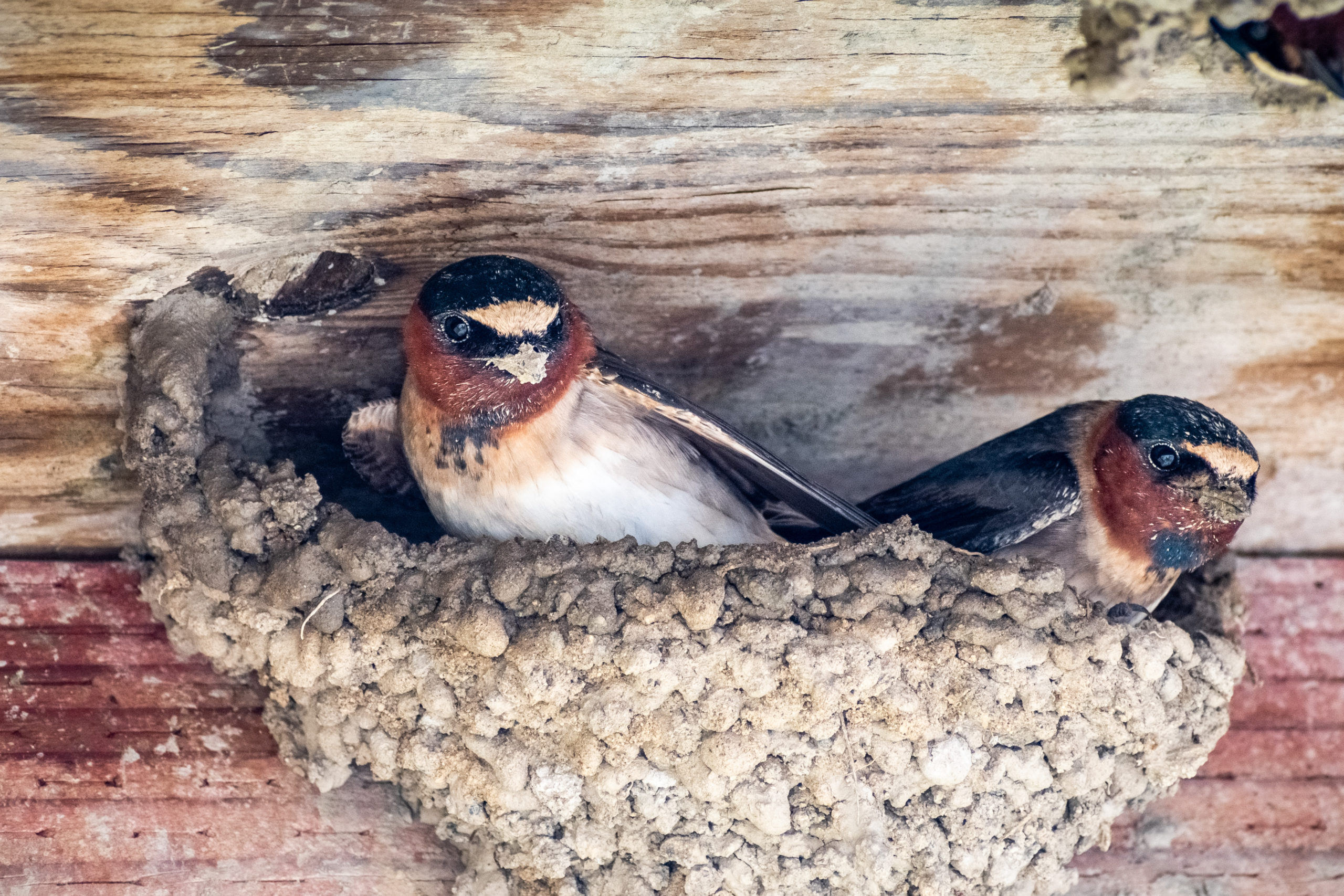
Spider Beetles
Spider beetles are part of the Anobiidae family and, while they are so named for resembling spiders, they are true beetles. Adults can range between 1.5 – 4.3mm long, are reddish brown to black in color, and are very rounded in shape. Like bed bugs, they like to inhabit dark areas and are more active at night. Thankfully they do not bite people and instead feed on a variety of different substances including (but not limited to) almonds, cereals, dead insects, fruits, feathers, flour, hair, maize, leather, wood particles, bones, books, silk, seeds, wheat, wool, etc. Due to the fact that they sometimes consume fabrics, spider beetles have occasionally been found in or around beds, rugs, couches, chairs, etc. leading to their initial misidentification as potential bed bugs. 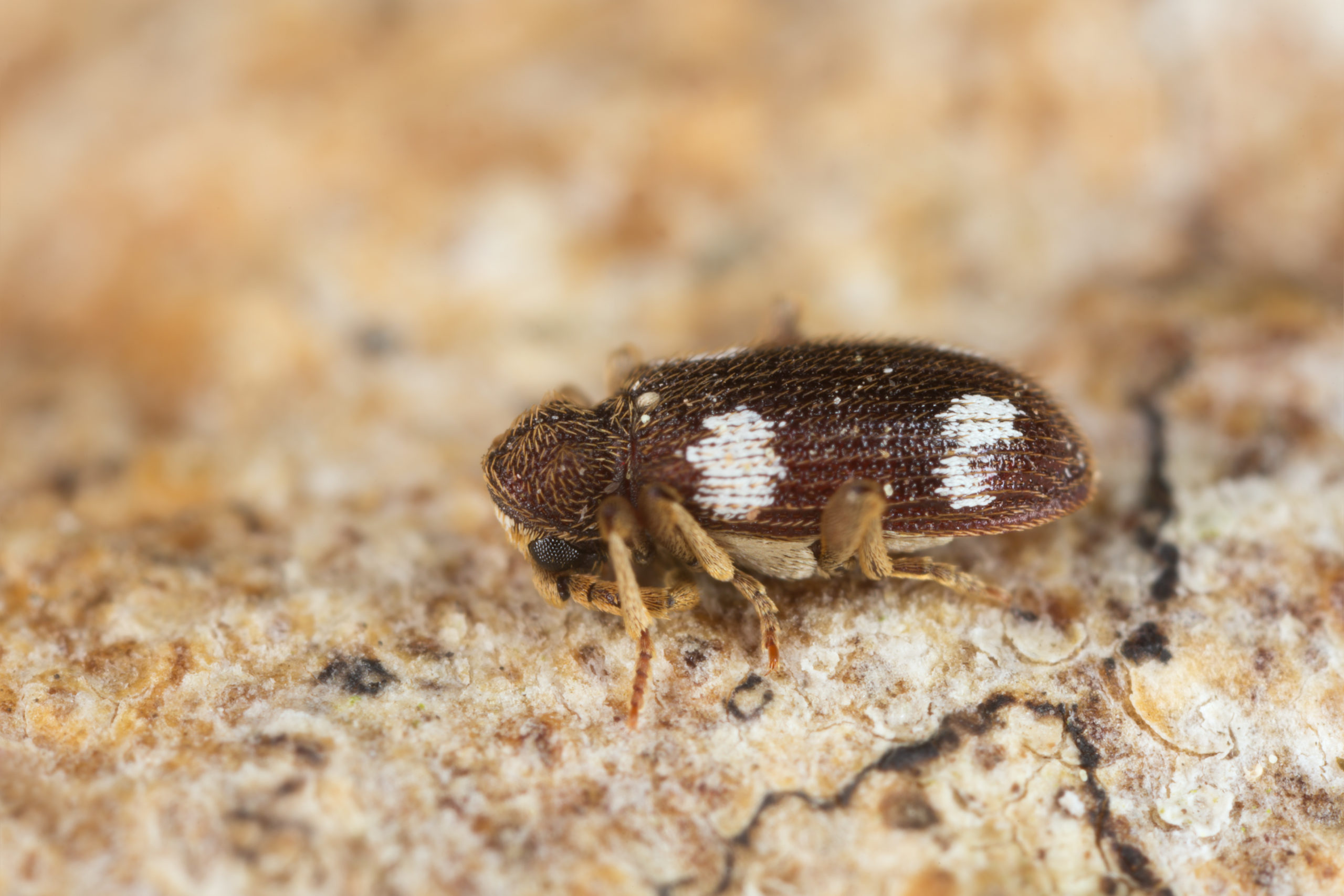
Carpet Beetles
True to their name, these pests love to infest carpeting as well as some other areas with fabrics such as beds and closets. They consume organic-based fabrics such as cotton, wool, leather, silk, and even feathers and, similar to bed bugs, these tiny pests like to hide in small, dark areas where they are not likely to be found. Occasionally, this can lead to carpet beetle infestations being misidentified as bed bug issues. However, with a close look at these little guys, you can identify which pests are pestering you. Carpet beetles are very tiny pests measuring a mere 1/16th – 1/8th of an inch in length when full grown. They are oval shaped and typically have a mottled pattern on their shells that is a mix of black, brown, white, and sometimes even an orange/yellow tone. Aside from the different appearance, carpet beetles notably won’t bite people, further separating them from bed bug infestations. 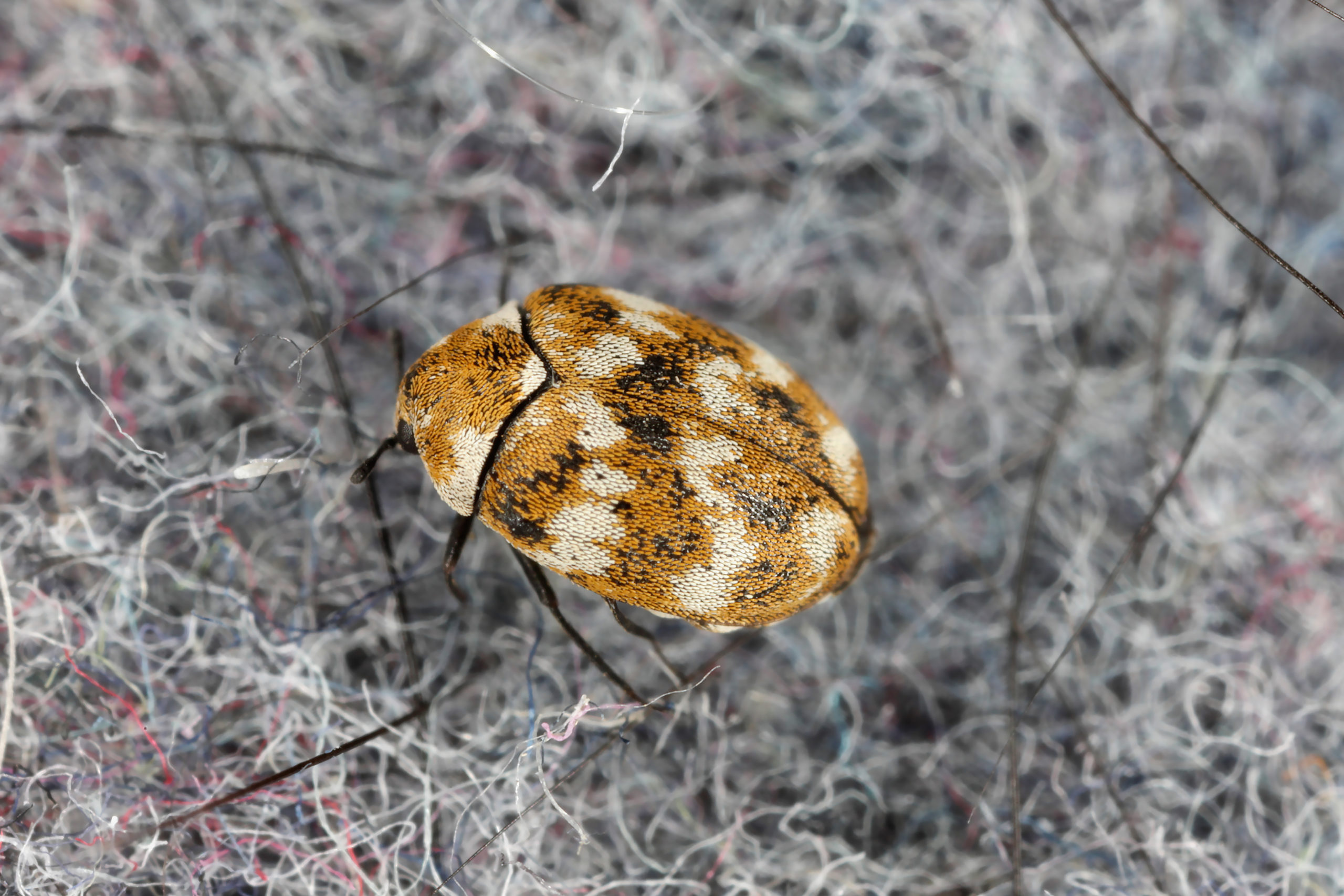
Booklice
Booklice are very small insects averaging about 1/16th inch in length (1mm). They can be a variety of different hues including white, yellow, orange, or brown and are often found in dark, moist areas with access to paper products. Their small size, color, and crawling nature can sometimes lead to their mistaken identity as bed bugs, however they have far more differences than similarities when examined. Booklice do not bite people, rarely make their way into beds, and, when inspected with a magnifying lens, actually far more resembles termites than bed bugs. 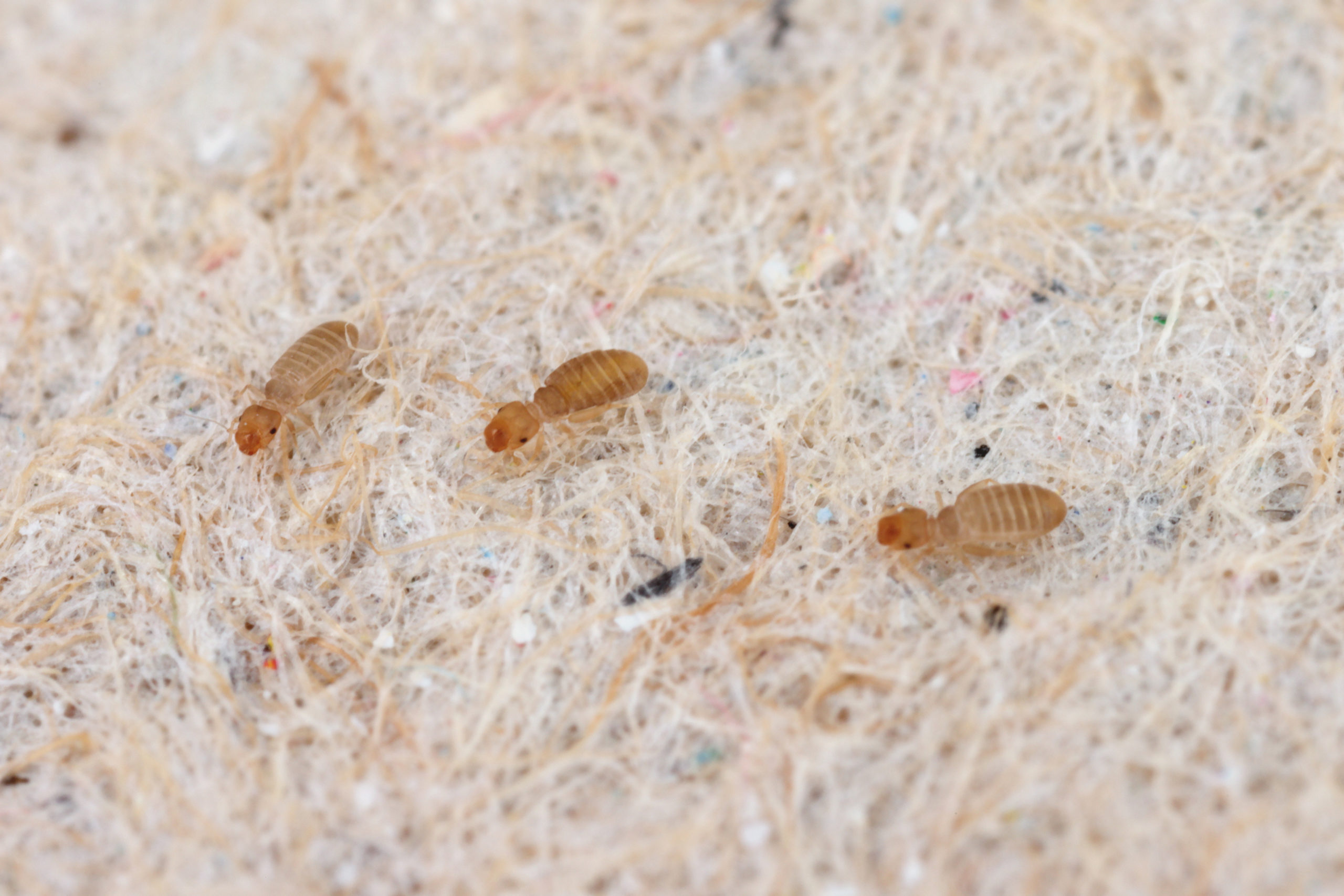
Fleas
These nasty little pests are very tiny, coming in at about an 8th of an inch in length and are reddish-brown in color. Fleas are also external parasites that bite their victims, leaving behind itchy red marks. All the aforementioned mean these pests resemble bed bugs both in appearance and activity, yet there are some key defining features that can separate these insects. Unlike bed bugs who are flat from top to bottom, fleas have flat sides with long bodies. Fleas can also jump, while bed bugs only crawl, and they are often found living in the fur of pets as opposed to inside beds and furniture.
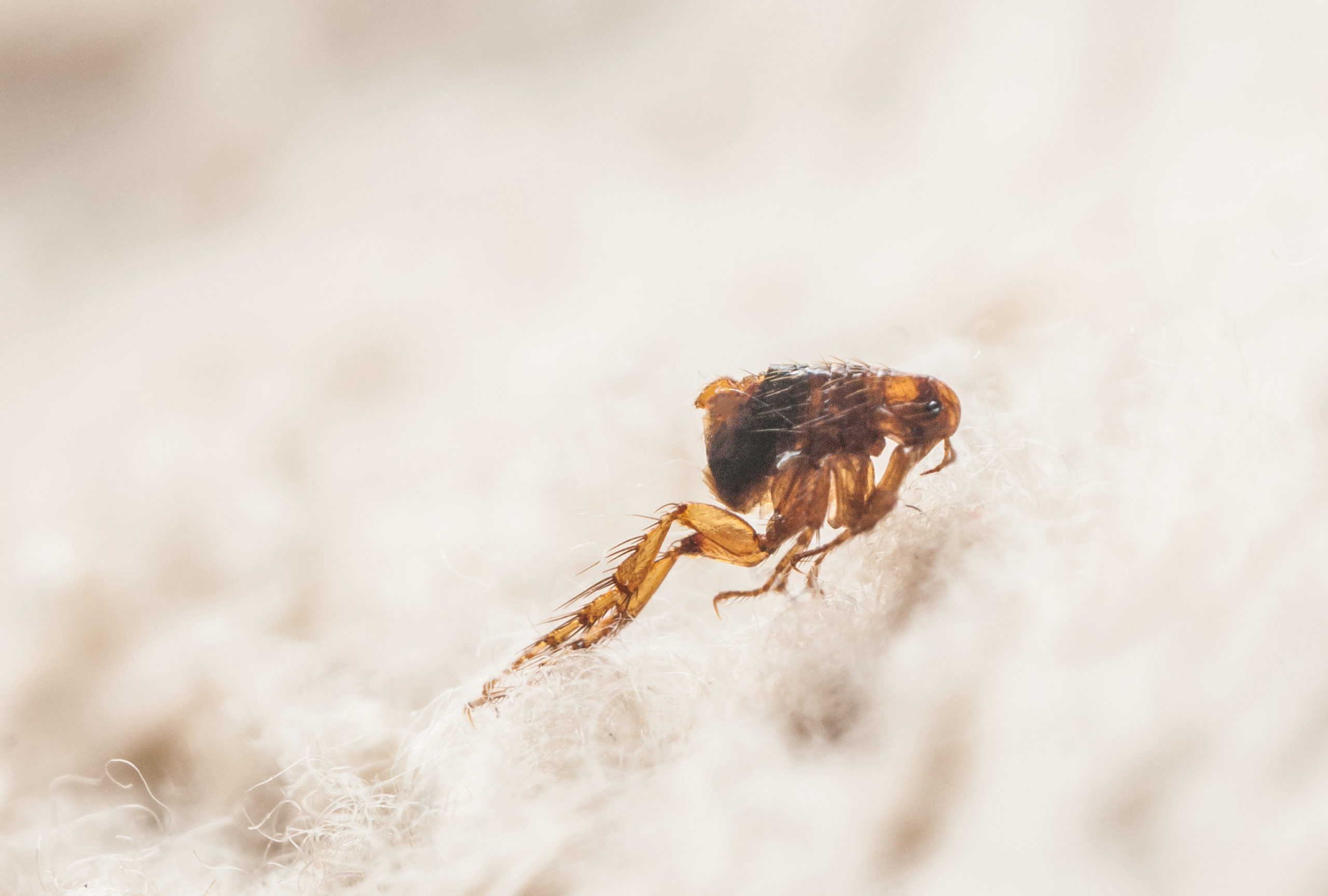
Citations
Choe, D.-H. (2020) Carpet Beetles, The University of California Statewide Integrated Pest Management Program . Available at: http://ipm.ucanr.edu/PMG/PESTNOTES/pn7436.html (Accessed: April 27, 2021). Cranshaw, W., Camper, M. and Peairs, F. (2013) Bat Bugs, Bed Bugs and Relatives, Colorado State University Extension. Available at: https://extension.colostate.edu/topic-areas/insects/bat-bugs-bed-bugs-and-relatives-5-574/ (Accessed: September 2021). Cranshaw, W. and Ewals-Strain, B. (2020) Bed bug lookalikes – bat bugs and swallow bugs in Colorado, Colorado State University Extension. Available at: https://extension.colostate.edu/topic-areas/insects/bed-bug-lookalikes-bat-bugs-and-swallow-bugs-in-colorado-5-625/ (Accessed: September 24, 2021). Damir, M. (2017) How to Deal with Bat Bugs, Pest Control Technology. Available at: https://www.pctonline.com/article/how-to-deal-with-bat-bugs/ (Accessed: September 2021). Drees, B. (2017) Booklice, Extension Entomology. Texas A&M University. Available at: https://extensionentomology.tamu.edu/publications/booklice/ (Accessed: September 24, 2021). Hill, S. and Mitola, M. (2017) Common Carpet Beetle – Anthrenus scrophulariae (Linnaeus), University of Florida Department of Entomology and Nematology. The Florida Department of Agriculture and Consumer Services. Available at: http://entnemdept.ufl.edu/creatures/fabric/common_carpet_beetle.htm (Accessed: April 27, 2021). Jacobs, S. (2014) Booklice, Penn State Extension. Pennsylvania State University College of Agricultural Sciences. Available at: https://extension.psu.edu/booklice (Accessed: September 24, 2021). Jacobs, S. (2013) Spider Beetles, Penn State Extension. Pennsylvania State University College of Agricultural Sciences. Available at: https://extension.psu.edu/spider-beetles (Accessed: September 24, 2021). Ogg, B. and Kalisch, J. (no date) Bat Bugs and Bat Ticks, Lancaster County University of Lincoln Nebraska. Available at: https://lancaster.unl.edu/pest/resources/351BatBugsTicks.pdf (Accessed: September 2021). Potter, M. (2020) Bed Bugs, The University of Kentucky College of Agriculture, Food, and Environment. Entomology at the University of Kentucky. Available at: https://entomology.ca.uky.edu/ef636 (Accessed: September 2021). Potter, M. (no date) Carpet Beetles, Entomology at the University of Kentucky. Available at: https://entomology.ca.uky.edu/ef601 (Accessed: September 2021). Prevention and Control: Fleas (N/A) Illinois Department of Public Health. The Division of Environmental Health. Available at: http://www.idph.state.il.us/envhealth/pcfleas.htm (Accessed: September 2021).
Request a Free Quote Today
(We do not share your data with anybody, and only use it for its intended purpose)
